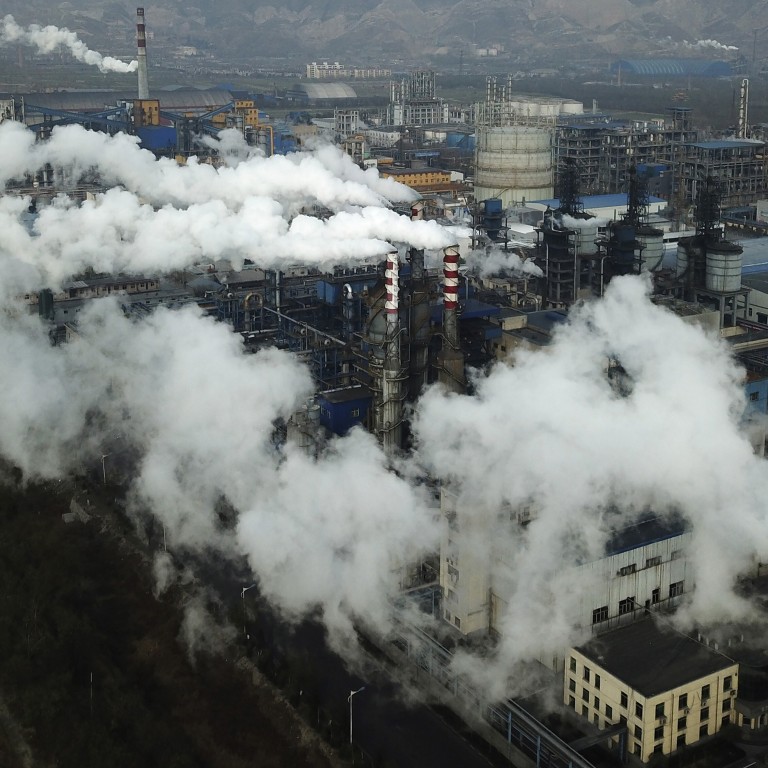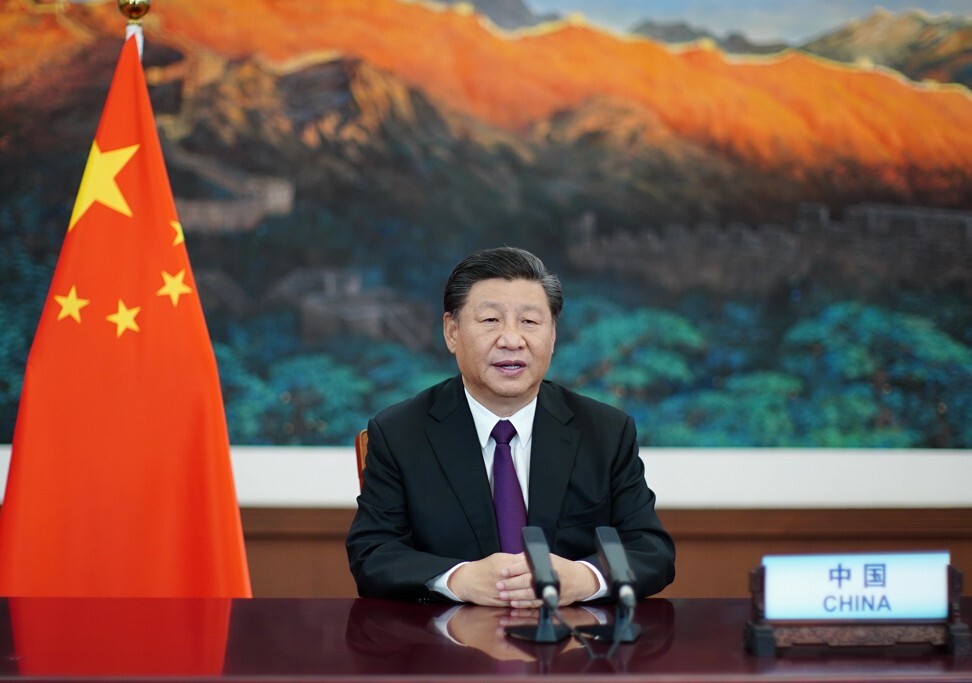
China’s vow to cut carbon emissions clashes with plans to expand coal power plants, report says
- Xi Jinping’s UN pledge to make China carbon neutral by 2060 conflicts with plans to expand the country’s coal-power capacity, two research groups say
- Next five-year plan for energy should phase out coal-fired power plants and double expansion of wind and solar power, they urge
China’s pledge to become carbon neutral by 2060 implies that plans to expand the nation’s coal power cannot proceed, two environmental research groups contended on Friday.
A report by the Draworld Environment Research Centre of Beijing and the Centre for Research on Energy and Clean Air in Finland notes that the power industry’s plan to expand China’s coal-power capacity to 1,300 gigawatts (GW) or more by 2030 contradicts the nation’s 2060 carbon-neutral target, which President Xi Jinping announced at the United Nations biodiversity summit in September.

03:05
China vows carbon neutrality by 2060 during one-day UN biodiversity summit
China already has around 130GW excess coal-power capacity among a total coal-fired capacity of more than 1,000GW. However, the China Electricity Council, a federation of state-owned electricity companies, urged the expansion to 1,300GW or even higher by 2030 in a report last year.
China is scheduled to finalise its 14th economic, energy and electric power Five Year Plan (2021–2025) around the end of 2021, but the environmental organisations are calling for a policy process to phase out coal-fired power plants and double the expansion of wind and solar power over the next decade.
The five-year plan must align with China’s environmental commitments at the UN, and that objective should not be swayed by industry heavyweights, according to the report.
Coronavirus: Lockdown may have helped cut China’s carbon emissions
“The proposed expansion of total installed capacity in a sector already riddled with overcapacity and low returns on assets will result in more than 2 trillion yuan [US$304 billion] of stranded assets during the entire life cycle,” Dr Zhang Shuwei, the report’s lead author and Draworld’s chief economist, said.
The report found that China‘s share of global carbon emissions increased from less than 20 per cent in 2010 to around 26 per cent in 2019.

The power sector is the largest source of carbon dioxide (CO2) emissions in China – but it is also the sector with the most low-cost options to cut those emissions. This makes the sector’s contribution crucial to meet the country’s targets of peaking carbon emissions before 2030 and reaching carbon neutrality targets before 2060, according to the report.
“The most economically efficient path to the target will be to drastically reduce total installed coal-fired power capacity to 680GW by 2030 and for the sector to reach carbon neutrality before 2060,” the report reads.
“The policy on coal-fired power plants needs to consider employment and management of state-owned assets to promote a transition to renewable power,” Zhang said.
“A further expansion of the coal-fired power industry would greatly complicate this challenge, requiring a cliff fall of coal power generation after 2030.”

04:56
Hong Kong could slash carbon emissions 70% with more ambitious goals, says former observatory head
Over the last half-century, China’s large manufacturing-based economy has primarily been fuelled by coal-fired power. As the world’s top carbon polluter and energy consumer, China has produced more greenhouse gases than those of the United States and the European Union combined since 2012.
China has taken steps to reduce emissions in recent years and progress has been made in meeting Copenhagen and Paris climate targets. However, its carbon emissions have rebounded since 2017 and its coal-heavy recovery has seen more than half the world’s coal-fired power capacity built in the first six months of 2020.
In a proposal of the 14th Five-Year Plan and 2035 long-term objectives released early this month, the country’s top leadership made vague statements about reducing carbon intensity and introducing an action plan to assure that CO2 emissions peak before 2030.

